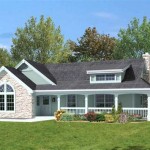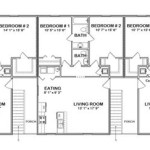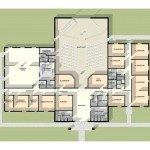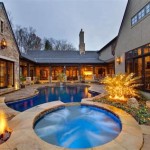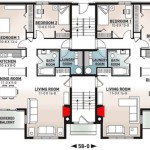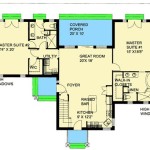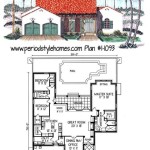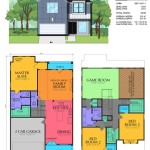Modern House Plans For Sloped Lots: Maximizing Space and Style
Building a home on a sloped lot presents unique challenges and opportunities. While some perceive a sloping terrain as an obstacle, many architects and homeowners recognize its potential to create visually stunning and functionally innovative residences. Modern house plans for sloped lots skillfully integrate design principles that leverage the natural topography, resulting in homes that are both aesthetically pleasing and highly efficient. These plans focus on minimizing excavation, maximizing views, and creating seamless transitions between indoor and outdoor spaces.
The architectural considerations for sloped lot houses differ significantly from those for homes built on flat land. Traditional methods of simply leveling the ground often lead to excessive soil displacement, increased construction costs, and potential environmental damage. Modern approaches prioritize working with the existing landscape, embedding the house into the slope rather than imposing it upon it. This approach often results in lower building costs, reduced environmental impact, and a more harmonious integration with the surrounding environment.
Several architectural styles lend themselves particularly well to sloped lot construction. Contemporary designs with clean lines and minimalist forms often blend seamlessly with the natural contours of the land. Ranch-style homes, known for their single-story layouts and sprawling footprints, can be adapted to follow the slope, creating multiple access points and outdoor living areas at different levels. Two-story designs can also be effectively implemented, with the lower level partially or fully submerged into the hillside, providing natural insulation and privacy.
Effective Site Analysis and Grading
Before embarking on any construction project on a sloped lot, a thorough site analysis is paramount. This assessment should include a detailed topographical survey to map the contours of the land, identify drainage patterns, and assess soil stability. Geotechnical investigations are also crucial to determine the bearing capacity of the soil and identify any potential risks of landslides or soil erosion. This information forms the foundation for informed design decisions and ensures the structural integrity of the building.
Grading, the process of reshaping the land, is often necessary to create a suitable building pad and manage stormwater runoff. However, the extent of grading should be minimized to preserve the natural landscape and reduce environmental impact. Terracing, a technique that involves creating a series of level platforms supported by retaining walls, is a common approach to managing slopes and creating usable outdoor spaces. Careful planning of drainage systems is also critical to prevent water from accumulating around the foundation and causing damage.
Sustainable grading practices prioritize minimizing soil disturbance, preserving existing vegetation, and implementing erosion control measures. Bio-swales, vegetated channels designed to filter and slow down stormwater runoff, are often incorporated to improve water quality and reduce the risk of flooding. Retaining walls should be designed not only for structural stability but also for aesthetic appeal, using natural materials and incorporating plantings to blend them into the landscape.
Foundation Considerations and Design Strategies
The foundation is the backbone of any structure, and its design is particularly critical for homes built on sloped lots. Traditional slab-on-grade foundations, commonly used on flat land, are generally not suitable for sloping terrain. Instead, several alternative foundation systems are employed, each with its own advantages and disadvantages.
One common approach is the use of a stepped foundation, which follows the contours of the slope, creating a series of level platforms. This system is relatively simple to construct and can be adapted to accommodate varying degrees of slope. Another option is a pier and beam foundation, where the house is supported by a series of concrete piers or steel columns. This system is particularly well-suited for steep slopes, as it minimizes excavation and allows for natural drainage underneath the house.
A walk-out basement is another popular design strategy for sloped lot homes. This approach involves excavating into the hillside to create a fully or partially submerged basement level, which provides additional living space and easy access to the backyard. The basement walls must be properly waterproofed and reinforced to withstand the pressure of the surrounding soil. Daylighting strategies, such as incorporating large windows and skylights, can enhance the livability of the basement space.
Regardless of the foundation system chosen, proper soil compaction and drainage are essential to prevent settlement and water damage. Retaining walls may be required to support the foundation and prevent soil erosion. These walls should be designed by a qualified structural engineer to ensure their stability and longevity.
Maximizing Views and Natural Light
One of the primary advantages of building on a sloped lot is the potential for panoramic views. Modern house plans often incorporate large windows, expansive decks, and strategically placed balconies to maximize the enjoyment of the surrounding scenery. Thoughtful orientation of the house can also optimize solar exposure, reducing energy consumption and enhancing natural light.
The placement of windows should be carefully considered to frame specific views and capture natural light at different times of the day. South-facing windows are ideal for passive solar heating in the winter, while east-facing windows can provide morning sunlight. Overhangs and awnings can be used to shade windows during the summer months, preventing overheating. The use of energy-efficient windows with low-e coatings can further reduce energy consumption and improve thermal comfort.
Skylights and clerestory windows can be incorporated to bring natural light into interior spaces that may not have direct access to exterior walls. These features can be particularly effective in basements or rooms located deep within the house. Light tubes, reflective devices that channel sunlight from the roof to interior spaces, are another option for bringing natural light into areas that are otherwise difficult to illuminate.
Outdoor living spaces, such as decks, patios, and balconies, are an integral part of modern sloped lot house plans. These areas provide opportunities for relaxation, entertainment, and connection with nature. Multi-level decks can be designed to follow the contours of the slope, creating a seamless transition between indoor and outdoor spaces. Outdoor fireplaces, kitchens, and seating areas can further enhance the functionality and enjoyment of these spaces.
Beyond the view, landscaping plays a crucial role in integrating the house with its surroundings. Incorporating native plants and trees can help to blend the structure into the natural environment and create a sense of privacy. Xeriscaping, a landscaping technique that minimizes water usage, is particularly well-suited for sloped lots, as it reduces the risk of soil erosion and conserves water resources.
Accessibility is another important consideration when designing a home on a sloped lot. Ramps and elevators can be incorporated to provide access for people with mobility limitations. Universal design principles, which prioritize accessibility and usability for all people, can be applied throughout the house to create a comfortable and inclusive living environment.
The design and construction of a modern home on a sloped lot require careful planning, attention to detail, and collaboration between architects, engineers, and contractors. By embracing the challenges and opportunities presented by the terrain, it is possible to create a unique and rewarding living space that seamlessly integrates with the natural environment.

Modern House Plans For Sloped Lots Fresh 29 Best Steep Slope Images On Sloping Lot Plan

Sloped Lot House Plans With Walkout Basements At Dream Home Source Unique Modern Architecture

Modern House Plan Sloping Lot Contemporary Style 5590 Vista

Plan 51696 Traditional Hillside Home With 1736 Sq Ft 3 Be

Looking For The Perfect Affordable Cottage With A Large Covered Balcony Plan 1143

Sloped Lot House Plans Down Slope The Designers

Ocho House Sloping Lot Plan Slope Hillside

Home Plan Ch507

Sloping Lot Home Design In South

The Best House Plans For Sloped Lots And Narrow Houseplans Blog Com

